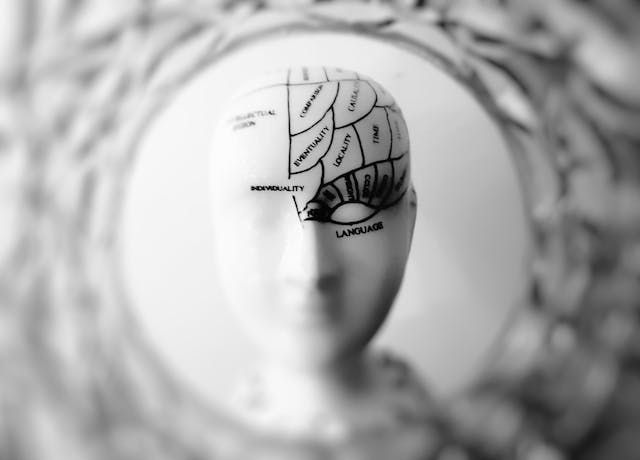
Living with depression can be challenging at any time of year. For people struggling with their mental health, the summer months can bring a unique set of obstacles. It is implied that summer is for enjoying the warmth of the sun and summer festivities. However, for individuals battling depression, they may find it difficult to find that same sense of lightness and happiness. In this blog post, we will explore how therapies like Eye Movement Desensitization and Reprocessing (EMDR) and Internal Family Systems (IFS) can offer hope and relief for those suffering from depression, even in the midst of summer.
Understanding Depression in the Summer Sunlight
Summer often paints a picture of endless joy and outdoor celebrations. For those grappling with depression, this season can cast a shadow of heightened despair. The contrast between the societal expectation of summer bliss and the personal reality of inner turmoil can exacerbate feelings of isolation and inadequacy. During these warmer months, the pervasive cheerfulness can feel isolating to someone struggling internally. It can make the gap between their experience and that of others seem even wider. This disparity can intensify the sense of being out of place or left behind.
This may feel like the world around them seems to bask in a light that feels unattainable. Furthermore, the increased social activities and gatherings that characterize summer can serve as reminders of one's battles with social anxiety. It can add layers of complexity to an already challenging mental health landscape. The omnipresent cultural message that summer is a time for unfettered happiness can inadvertently place undue pressure on those who find their reality far removed from this idealized notion. This might turn what is meant to be a season of warmth and growth into a period of deepened struggle.
Celebrating Summer Festivities While Coping with Depression

Engaging in summer celebrations when dealing with depression may seem daunting. Despite that, small, intentional actions can create moments of joy amidst the struggle. Begin by acknowledging your feelings without judgment and permit yourself to participate in activities that feel manageable and comforting. Instead of succumbing to the pressure of attending large gatherings, consider smaller or more intimate settings where you feel safe and supported.
Creating a personal tradition or ritual that brings you peace and joy during the summer can also be a powerful step towards healing. This might be as simple as watching the sunrise, taking a walk in nature, or dedicating time to a hobby you love.
Additionally, harness the power of connection by reaching out to trusted friends or family members who understand your journey. Sharing your experiences with them can provide a sense of belonging and support, making the festivities less isolating. If direct participation feels too overwhelming, try to find alternative ways to engage with the spirit of summer. This can be planning a virtual get-together, or sitting outside to soak in the warmth and sights of the season.
Remember, it’s perfectly acceptable to decline invitations when you need time for yourself. Your well-being is paramount, and finding a balance that respects your mental health is crucial. Celebrating in a way that honors where you are on your journey can make the summer more enjoyable and meaningful.
An Overview of EMDR Therapy for Depression Treatment
EMDR (Eye Movement Desensitization and Reprocessing) therapy stands as a transformative approach in the field of psychological treatment, particularly for depression. This innovative method harnesses the power of bilateral stimulation, such as side-to-side eye movements or tapping. This is to facilitate the processing of distressing memories and emotions that contribute to depressive states. The therapy sessions are structured to allow individuals to revisit traumatic or triggering events in a safe and controlled environment.
Through guided eye movements led by a trained therapist, patients can re-examine these experiences without the intense emotional response that they typically elicit. The aim is to desensitize the individual to these distressing memories. By reducing their impact, it allows for the development of healthier coping mechanisms. As a result, EMDR has been effective in mitigating the symptoms of depression, providing a pathway toward emotional healing and resilience. This therapy offers a beacon of hope for those seeking to overcome the effects of depression. It offers a way to reclaim a sense of mental freedom and well-being.
Exploring Internal Family Systems (IFS) as a Depression Treatment

Internal Family Systems (IFS) therapy emerges as an innovative and compassionate approach to tackling the complexities of depression. This therapeutic model delves into the multifaceted nature of the psyche. It proposes that the mind consists of subpersonalities, or "parts," each with its unique perspectives, feelings, and memories. IFS aims to identify and understand these parts, especially how they interact and sometimes conflict, contributing to depressive symptoms. Central to IFS therapy is the concept of the Self. The Self is a core aspect of being that embodies qualities such as confidence, clarity, and compassion. Through IFS, individuals learn to access their Self and lead their internal system with these qualities. Doing this offers comfort and guidance to parts in distress.
The process of IFS therapy involves engaging with these parts in a nonjudgmental and curious way, recognizing their positive intentions, and understanding the burdens they carry. These burdens typically stem from past traumas or negative beliefs. By healing these parts, IFS helps to release their burdens, allowing for a more harmonious internal system. This can lead to significant decreases in depressive feelings, as individuals are no longer weighed down by the conflicts and burdens within their parts. Through fostering an internal environment of understanding, compassion, and support, IFS therapy holds the potential to transform the internal landscape. It can offer relief and a pathway out of depression's depths.
The Challenge of Treatment-Resistant Depression
Treatment-resistant depression presents a profound obstacle, making the journey toward mental wellness seem insurmountable for some. Defined by a lack of response to traditional treatments, such as medication and standard talk therapies, individuals facing this form of depression may feel trapped in a cycle of unsuccessful attempts to find relief. This condition demands a more nuanced understanding of the underlying causes of depression. It urges a shift toward innovative and personalized therapeutic approaches.
The complexity of treatment-resistant depression lies in the persistence of symptoms and the unique experiences and histories of those affected. Recognizing this challenge is crucial in exploring alternative paths to healing. Delving deeper into the psychological roots of depression with therapies like EMDR and IFS can potentially be beneficial. For those grappling with this daunting form of depression, it's essential to maintain hope and continue seeking options that address the specific dimensions of their distress.
Can EMDR and IFS Offer Hope for Treatment-Resistant Depression?

For individuals navigating the challenging waters of treatment-resistant depression, traditional approaches may not always lead to the desired shores of relief and recovery. In these instances, EMDR (Eye Movement Desensitization and Reprocessing) and IFS (Internal Family Systems) therapy stand out as potential lighthouses, offering guidance and hope. These therapies delve into the deeper layers of the psyche. They address the root causes of depression rather than just its surface symptoms. EMDR focuses on reprocessing traumatic memories that often underpin depressive disorders, allowing individuals to experience these memories in a less distressing way.
Meanwhile, IFS offers a path to understanding and healing the fragmented parts of oneself, fostering internal harmony and reducing depressive symptoms. By engaging with these innovative therapies, individuals with treatment-resistant depression may find avenues for change that were previously unexplored. The personalization and depth of EMDR and IFS can resonate with those who have felt misunderstood or untouched by other treatments. It provides a fresh perspective and renewed hope. As more research unfolds and clinical experiences accumulate, the potential of EMDR and IFS to significantly impact treatment-resistant depression becomes increasingly evident. It offers a glimmer of light to those who have long been in the shadows.
Practical Steps to Seek Help and Start Therapy
Taking action to address your depression by connecting with a professional can mark the beginning of your journey to wellness. To start, research therapists who specialize in depression and are trained in EMDR, IFS, or any therapy that resonates with you. Many resources are available online. This includes directories and reviews, to help you find a clinician who matches your needs and preferences. Don't hesitate to reach out and ask questions about their approach, experience, and how they've helped others with similar challenges.
Booking an initial consultation can provide insight into whether you feel comfortable with the therapist and their methodology. Remember, the therapeutic relationship is pivotal to the success of your treatment, so feeling understood and safe is essential. If the fit isn't right, it's perfectly fine to seek out another professional who better aligns with your expectations and needs.
Additionally, consider joining support groups, either in-person or online. Connecting with others facing similar struggles can offer validation, encouragement, and practical advice on navigating depression. Support groups also provide a sense of community and belonging, vital components in overcoming feelings of isolation.
Finally, be open to discussing your concerns with loved ones. While starting therapy is a personal decision, having the support of friends or family can bolster your resolve and provide an additional layer of support as you embark on this healing journey.

For many individuals, the concept of mindfulness is synonymous with practices like meditation and visualization. However, what happens when visualization doesn't work for you? How can you still cultivate mindfulness and reap its benefits? In this blog post, we will explore alternatives to traditional mindfulness practices for those who struggle with visualization or meditation. From tailoring the techniques to the individual to incorporating EMDR therapy, there are plenty of options to explore. Let's dive in and discover new ways to embrace mindfulness.
Understanding the Challenges of Traditional Mindfulness Practices

Traditional mindfulness practices like meditation and visualization are celebrated for their benefits in enhancing mental well-being and promoting a state of calm. However, these methods aren't universally effective, posing unique challenges for some individuals. For those who find it difficult to generate mental images, the common visualization techniques can feel frustrating and exclusionary. Similarly, meditation, with its emphasis on stillness and quieting the mind, can be daunting for people who experience restlessness or have an overactive mind.
This discrepancy highlights a crucial point: mindfulness is not a monolithic practice. It is a varied landscape of techniques, each with its own set of obstacles for different people. Recognizing and acknowledging these challenges is the first step toward opening the door to a broader understanding of mindfulness. It underscores the necessity of exploring a range of practices that can accommodate diverse experiences and preferences. As we navigate through these challenges, it becomes evident that flexibility and adaptability in our approach to mindfulness can lead to a more inclusive and beneficial experience for all.
The Importance of Tailoring Mindfulness to the Individual

Mindfulness is not a one-size-fits-all journey. Each person's experiences, challenges, and preferences shape how they can best engage with mindfulness practices. Recognizing this diversity is essential in making mindfulness accessible and effective for everyone. If traditional methods like visualization don't align with your abilities or preferences, it's crucial to remember that this doesn't exclude you from practicing mindfulness. Instead, it invites an opportunity to get creative and explore other techniques that might resonate more deeply with you.
Exploring different mindfulness practices is an act of self-compassion and personal understanding. Whether it's through mindful movement practices such as yoga or tai chi, focusing on the sensations of your breath, or engaging in daily activities with full awareness, there are myriad ways to cultivate mindfulness. The goal is to find practices that not only accommodate your needs. You must also enrich your daily life with moments of presence and awareness.
Engaging with practices that are in harmony with your individual needs can transform your mindfulness journey. This can be from one of frustration to one of discovery and growth. By remaining open to experimentation, you give yourself the space to uncover practices that support your well-being. This can lead to a deeper sense of mindfulness. This personalized approach ensures that your mindfulness practice is not only sustainable but also a source of joy and discovery in your life.
Practical Mindfulness Techniques Without Visualization
Exploring mindfulness beyond visualization opens up a wealth of possibilities for engaging with the present moment in a meaningful way. For those who find it challenging to conjure mental images, focusing on tangible, sensory experiences can serve as an effective alternative. One simple yet powerful technique is mindful listening. This practice involves paying full attention to the sounds around you. This can be the rhythmic patter of rain, the distant hum of traffic, or the subtle shifts in a room. By tuning into the auditory landscape, you can anchor yourself in the now without the need for visualization.
Another approach is to engage in tactile activities that ground you in the physicality of the present. Activities such as kneading dough, playing with clay, or even the act of cleaning can become mindfulness exercises. Just approach it with full awareness of the sensations in your hands and the movements of your body. These activities offer a direct pathway to mindfulness by leveraging the sense of touch, drawing your focus away from the whirlwind of thoughts and into the realm of tactile experience.
Mindful eating presents yet another avenue for cultivating mindfulness without visualization. By slowing down and truly savoring each bite, paying attention to the textures, flavors, and aromas of your food, you transform a routine activity into a deliberate practice of presence. Each of these techniques provides a unique way to experience mindfulness. It emphasizes the richness of the present moment through the senses rather than through visual imagery.
The Role of EMDR in Achieving Mindfulness
EMDR (Eye Movement Desensitization and Reprocessing) offers a unique contribution to the mindfulness journey, especially for individuals grappling with trauma. Although it primarily serves as a therapeutic tool for processing traumatic memories, its benefits extend to enhancing mindfulness. EMDR facilitates a deep engagement with the present moment. This is done by addressing and healing the emotional distress that can tether the mind to past events. This therapeutic process encourages an increased awareness and acceptance of one’s emotional state and thought patterns. It lays the groundwork for a more mindful way of living.
Through bilateral stimulation, typically involving eye movements, EMDR helps to unlock emotional processing that may be stuck, allowing individuals to experience relief from emotional blockages. As these blockages are addressed, individuals often find it easier to access states of mindfulness. This is due to their capacity for emotional regulation and presence in the now that is significantly improved. Engaging in EMDR therapy under the guidance of a skilled practitioner not only aids in the healing of past wounds but also enriches the pursuit of mindfulness by fostering a deeper connection with the self and the surrounding world.
Incorporating Mindfulness into Daily Activities

Integrating mindfulness into the fabric of everyday life can transform mundane tasks into opportunities for presence and awareness. Instead of seeing activities like brushing your teeth, taking a shower, or commuting to work as mere chores or routines, view them through a mindfulness lens. Focus on the feel of the toothbrush against your gums, the water cascading over your skin, or the rhythm of your footsteps. Each action offers a chance to ground yourself in the current moment.
Notice the colors, sounds, and sensations around you without judgment. Pay attention to your breathing as you move through these tasks. Allow each breath to bring you closer to a state of calm and focus. This practice doesn't require extra time out of your day but simply a shift in perspective and intention. By embedding mindfulness into these daily activities, you create a continuous thread of awareness throughout your day. This can make mindfulness an accessible and seamless part of your life.
Mindfulness Apps and Tools That Don't Rely on Visualization
In our technologically advanced world, a vast array of mindfulness resources is available at our fingertips. They are designed to cater to those who may not find visualization-based practices accessible or effective. Various applications and digital platforms provide a wealth of guided exercises, focusing on techniques such as mindful breathing, auditory practices, and body scans that do not require the user to visualize but instead to tune into other senses or aspects of their experience.
For example, Insight Timer features a wide range of mindfulness and meditation sessions focusing on sound. It has thousands of guided audio meditations from practitioners around the globe. Similarly, Headspace offers sessions centered on mindful techniques like noting and body scanning. This encourages users to pay attention to their thoughts, feelings, and physical sensations without the need to visualize. The Calm app also provides a plethora of mindfulness exercises, including daily calm sessions and sleep stories, that focus on the auditory experience and the practice of being present through listening and sensing.
These tools not only support those who prefer or require alternatives to visualization-based mindfulness but also enhance accessibility. It allows users to explore mindfulness in a way that aligns with their personal preferences and needs. By integrating these apps and tools into your mindfulness practice, you can discover new pathways to presence and awareness without relying on visual imagery.
The Benefits of Non-Traditional Mindfulness Practices
Embracing non-traditional mindfulness practices offers a multitude of advantages for those seeking alternatives to visualization and conventional meditation. These practices encourage an exploration of mindfulness through diverse sensory experiences and activities. This allows for a broader understanding and appreciation of the present moment. By engaging in mindfulness techniques that utilize sound, touch, or mindful movement, individuals can discover a deeper connection to their environment and inner self.
This inclusive approach ensures that mindfulness is accessible to everyone, regardless of their ability to visualize or sit in meditation. It promotes a sense of grounding and awareness that is both practical and profound, integrating seamlessly into everyday life. As you embark on this varied mindfulness journey, you will likely notice an enhancement in your capacity for emotional regulation, stress reduction, and overall well-being. The flexibility and adaptability of non-traditional mindfulness practices make them a valuable resource for cultivating a peaceful mind and a more mindful life, tailored uniquely to each individual's path.

In today's digital age, teaching has become more challenging than ever before. With the rise of millennial parenting styles and the prevalence of social media addiction across all age groups, educators are facing unprecedented levels of stress and burnout. Fortunately, Eye Movement Desensitization and Reprocessing (EMDR) therapy offers a promising solution to help teachers cope with the demands of their profession and support their students in navigating the complexities of modern education.
The Landscape of Modern Education and Millennial Challenges
The transformation of the educational environment in recent years has been profound, significantly influenced by the distinctive child-rearing practices of millennial parents. This generation of parents, having grown up with technology at their fingertips, often adopts a tech-savvy approach to parenting. This emphases open lines of communication and a partnership-oriented relationship with educators. However, this dynamic can lead to complexities in the classroom, as teachers strive to balance the digital-first expectations of millennial parents with the traditional educational values and practices.
Additionally, the millennial emphasis on individualized attention and customized learning experiences for their children can place added pressure on educators. People, who must navigate these demands while addressing the diverse needs of their entire student body. This shift has not only changed the way educators teach but also how they interact with parents. It requires new strategies and approaches to foster effective partnerships and promote student success in an ever-evolving educational landscape.
Understanding Social Media Addiction Across Ages

Social media's grasp extends far beyond a simple distraction. It weaves into the very fabric of students' lives across various age groups, cultivating an environment ripe for addiction. This pervasive issue sees young minds constantly battling for concentration amidst a barrage of notifications and digital interactions. It significantly impairs their academic capabilities and focus.
The allure of likes, shares, and instant communication holds a compelling sway, leading to a reduction in meaningful, face-to-face interactions and a dependency on digital validation.
Such addiction does not merely hinder educational outcomes. It also seeps into the mental health arena, potentially exacerbating feelings of isolation, anxiety, and depression among students. This complex web of digital engagement requires educators to adopt nuanced strategies to mitigate its impact. This encourages healthier online habits and fostering environments that prioritize both academic and emotional growth. In addressing social media addiction, the goal is to reclaim the attention and well-being of students, guiding them towards balanced, responsible use of technology.
The Psychological Toll on Educators

Navigating the dual pressures of millennial parenting expectations and the pervasive influence of social media, educators are enduring a significant psychological toll. The constant endeavor to balance digital-first approaches with traditional teaching methodologies. This, coupled with the need to engage students deeply entrenched in the digital world, places a unique strain on teachers. This relentless pressure exacerbates stress, propelling many towards feelings of anxiety and burnout.
Such emotional and mental fatigue not only impairs their capacity to provide high-quality education but also affects their personal well-being. The intensity of these challenges often leaves educators seeking strategies to safeguard their mental health while maintaining their commitment to fostering an enriching learning environment. In this milieu, the necessity for supportive interventions and coping mechanisms becomes paramount. It highlights the need for resources that can aid in managing the intricate dynamics of modern education.
Introduction to EMDR Therapy
EMDR therapy stands as a transformative approach within the therapeutic world. It is designed to aid individuals in processing and overcoming trauma, anxiety, and stress-related symptoms. This method employs bilateral stimulation, through eye movements or tactile tapping. It is a mechanism to facilitate the brain's processing of distressing memories and beliefs that contribute to emotional discomfort. Originating as a treatment for PTSD, its applications have broadened, showing effectiveness in addressing a range of psychological stressors. EMDR's unique capacity to accelerate the mind's natural healing processes presents a novel avenue for educators and students alike, grappling with the pressures of modern educational environments and digital disruptions.
Through targeted sessions, participants can experience relief from psychological burdens. It can pave the way for enhanced coping mechanisms and a renewed sense of mental clarity. This foundation in EMDR therapy elucidates its potential as a supportive tool in educational settings, aimed at ameliorating the emotional and cognitive challenges faced by today’s teachers and learners.
EMDR Therapy for Students

EMDR therapy holds significant potential for students ensnared in the challenges of navigating a digital-centric lifestyle and the stressors inherent in modern academic environments. This therapeutic approach is particularly adept at addressing the deep-seated psychological effects of social media overuse. This often manifest as heightened anxiety, decreased self-esteem, and impaired focus. Through the process of bilateral stimulation, students are guided to confront and reprocess negative beliefs or traumatic experiences that may be exacerbating their reliance on digital validation and hindering their academic and social development.
By integrating EMDR into student support services, educational institutions can offer a proactive pathway for students to break free from the cycle of digital dependency and its accompanying mental health issues. This not only aids in enhancing their emotional regulation and resilience but also cultivates a healthier relationship with technology. As students learn to manage their emotional responses and build a stronger sense of self-worth independent of online feedback, they're better equipped to engage fully with their educational journey.
Such therapeutic interventions can be instrumental in reorienting students toward more productive coping mechanisms. This encourages a shift from virtual spaces to real-world connections and learning. The adoption of EMDR therapy for student support underscores a commitment to nurturing not only the intellectual but also the emotional and psychological well-being of learners. It prepares them for a balanced and successful path through school and into adulthood.
Implementing EMDR in Educational Settings
The integration of EMDR therapy within schools represents a strategic approach to addressing the psychological challenges facing today's educational community. Key to this implementation is the professional development of educators and school mental health professionals, and equipping them with the skills necessary to facilitate EMDR techniques. Providing access to EMDR-trained therapists on campus can greatly enhance the support system available to both teachers and students.
Additionally, developing partnerships with local mental health organizations can expand resources and ensure a broad spectrum of support. Workshops and informational sessions could be organized to demystify EMDR therapy for the school community. It can highlight its benefits and potential to improve academic and emotional outcomes. By fostering an environment that values mental health as much as academic achievement, schools can cultivate resilience and well-being across their populations. This will empowers educators and learners to navigate the complexities of the digital age with confidence and support.
Conclusion and Moving Forward
The challenges presented by the intersection of millennial parenting, media addiction, and the demands of modern education require innovative solutions. EMDR therapy represents a powerful tool in this quest. It offers both educators and students a pathway to better mental health and resilience. As we look to the future, the importance of integrating psychological well-being strategies into the fabric of our educational systems cannot be overstated. Schools must become places where mental health resources, like EMDR, are readily accessible to address the complexities of today's digital and educational landscapes.
By equipping our teachers with the means to manage stress and burnout effectively, and providing our students with the skills to navigate their digital world healthily, we set the stage for a more positive and productive learning environment. The journey ahead will require commitment, collaboration, and open-mindedness from all stakeholders in the educational community. Embracing EMDR therapy as part of a comprehensive approach to mental health in schools is a critical step toward fostering an environment where everyone can thrive amidst the challenges of the 21st century.

Experiencing or witnessing a profoundly distressing or threatening event can lead to the development of post-traumatic stress disorder, commonly known as PTSD. When you have PTSD, you get very anxious. Also, you have nightmares or relive the event that caused you to feel like that. Very often, it’s too much to take. To go through this, you might begin drinking. You might even try extremely dangerous substances just to be able to cope with your emotions. That is how you become dependent on substances. We will show you how PTSD and addiction are connected and how they make each other worse. When you understand this, you will make informed decisions, ask for professional help, and start living healthier lives.
What is PTSD?
Post-traumatic stress disorder (PTSD) is a mental health condition. It is triggered when you experience or witness a traumatic event. Many signs of trauma can help you recognize this condition. You might get flashbacks of that event, see nightmares, or feel severely anxious. Also, you might have uncontrollable thoughts about it.
Some common triggers of PTSD are:
● Military combat
● Serious accidents, like car crashes
● Natural disasters, like floods or earthquakes
● Violent personal assaults, such as robbery or attack
● Abuse or domestic violence.
How PTSD affects daily life
It is not easy to live with PTSD. What happens is - you feel scared or nervous, even in safe situations. You tend to avoid places or people that bring back the memories connected to the trauma. Your sleep gets disrupted, as well. You can’t concentrate, and you feel angry and irritable. Much of the time, you feel sad.
Of course, having these feelings makes it hard to do everyday activities. For example, working, going to school, or even socializing is difficult. Unfortunately, your relationships suffer, as well.

What is addiction?
Addiction is a serious condition where you become unable to stop using a substance, even though it causes harm to your health, relationships, and daily responsibilities. You change your brain’s reward system when you use the substance repeatedly. That makes your brain dependent on the substance. You can become addicted to many different substances, such as:
● Alcohol,
● Prescription drugs like painkillers or sedatives,
● Illegal drugs like heroin, cocaine, or methamphetamine,
● Nicotine, found in cigarettes and vaping products.
How addiction starts and affects your life
Addiction starts with the repeated use of a substance. At first, you feel the effects of the substance strongly. Then, when you start using regularly, your body becomes tolerant. This tolerance means that you now need higher amounts of the substance to get the same feeling. The substance becomes a central part of your life as you consume more. This dependence on the substance can spiral into addiction.
Once addiction takes hold, it can disrupt various aspects of your life. Here are some of its effects:
- Health complications: Chronic use can lead to severe health issues such as heart, lung, and liver diseases.
- Relationship strain: Behavioral changes associated with addiction can damage your relationships with loved ones.
- Performance issues: Addiction can impair your focus and productivity, causing problems at work or school.
- Economic strain: The costs of sustaining an addiction can lead to financial hardship.
- Legal troubles: Efforts to acquire more substances can sometimes result in legal issues.
How PTSD and addiction are connected, and their impact
How do PTSD and addiction relate? Experiencing PTSD often entails grappling with overwhelming feelings of unease, tension, or profound melancholy. These emotions can become so overwhelming that you might feel trapped or powerless. Seeking solace, one might turn to substances like alcohol or drugs for temporary respite. This transient respite underscores the direct link between PTSD and addiction. For instance, if recurrent nightmares disrupt your sleep, indulging in alcohol may momentarily offer a sense of escape, aiding in relaxation and reducing feelings of overwhelm. Nevertheless, this respite is brief and can swiftly foster a dependency on such substances merely to restore a semblance of equilibrium.

Impact of PTSD and addiction on health
When you suffer from PTSD and addiction in combination, the risk of heart disease is higher. That happens because there are harmful effects of substances that go together with stress. Your liver gets damaged, too. It processes the substances you use, especially if you use a lot or very often. Furthermore, stress and using drugs and alcohol will weaken your immune system. That puts you in a bad position when your body needs to fight infections. Not only that, you get distracted from PTSD symptoms, and substances impair your judgment, which causes accidents and injuries.
There are mental health risks as well. After a very short period, when substance abuse reduces your PTSD symptoms, it starts making them even worse. You are more likely to become depressed. Also, substances affect your cognitive functions. You cannot think anymore, you forget important information, and you can’t make the right decisions.
Treatment options for PTSD and addiction
You need treatment from professionals who know how PTSD and addiction are connected. One important thing about treating PTSD and addiction is to treat them together. When only one condition is addressed, the other condition might continue to affect you. Some effective approaches are:
● Trauma-focused cognitive behavioral therapy (CBT): This helps you identify and change negative thinking and behaviors. It can address both trauma responses and patterns of substance use.
● Eye movement desensitization and reprocessing (EMDR): This therapy is specifically aimed at treating trauma and can be very helpful in processing and reducing the distress from traumatic memories.
● Group therapy: Participating in group sessions can provide support from peers who are dealing with similar issues, which can reduce feelings of isolation and shame.
Choosing the right treatment: The benefit of inpatient rehab facilities
For individuals grappling with the combined challenges of PTSD and substance addiction, the choice of treatment environment is important. Consequently, many New York residents opt for treatment in New Jersey, seeking the quieter, more focused, and often more affordable settings that facilities there can offer, away from the hustle and intense pace of their home state. By choosing a specialized inpatient rehab facility in New Jersey, NY locals can access tailored care that fosters recovery in a conducive environment. These centers offer a controlled environment that is crucial for those who are dealing with severe manifestations of PTSD and dependence on substances. These facilities' continuous access to medical and psychological assistance is indispensable during the initial recovery stages.
Choosing a rehab center in New Jersey, away from the familiar settings of NYC, can also provide strategic benefits. It helps individuals distance themselves from environments that may trigger their PTSD symptoms or substance use, thereby increasing the effectiveness of the recovery efforts. The proximity of New Jersey to New York facilitates family involvement in the recovery process, allowing for regular therapy participation and visits, which are essential components of successful rehabilitation.
Enrolling in an inpatient rehab center can profoundly impact an individual’s recovery trajectory. These centers are specifically prepared to manage the dual diagnosis of PTSD and addiction by implementing therapies designed to address both conditions comprehensively. This holistic approach is crucial as it targets the underlying and overt aspects of the disorders, laying a strong foundation for sustained recovery.
Social support will help you
A study approved by the Institutional Review Board (IRB) at the Medical University of South Carolina shows that you can benefit from social support. There is a greater decrease in the use of substances and PTSD symptoms during treatment when a person has strong social support. It can make treatment more effective.
Look for lasting solutions
We know that drinking and using drugs make you feel better when you cannot cope anymore. However, it is a quick fix. In the long run, it leads to more problems than you think it solves. You get addicted and create a cycle that makes your PTSD symptoms even worse than before. Now that you know how PTSD and addiction are connected, you ought to get help from healthcare experts who understand how PTSD and addiction are connected. They will guide you and help you explore your triggers and traumas, and eventually, you will better your relationships and improve your performance at work or school. You will get to live a more fulfilling and enjoyable life.

In the world of trauma therapy, the journey towards healing is often likened to tending to a garden. Just as mowing the grass can provide immediate relief, it is equally important to uproot the weeds. This uproots the deep-rooted traumas and triggers that continue to cause distress. This blog post delves into the significance of going beyond the surface. It addresses the core issues that underlie our struggles in therapy. By embracing all of our parts and committing to the deep, transformative work, we can experience profound personal growth and transformation.
The Allure of Quick Fixes in Our Healing Journey

In the modern quest for instant gratification, it's tempting to seek out immediate, albeit temporary, solutions to our mental health challenges. This propensity for quick fixes is especially pronounced when we face the daunting complexities of trauma. Rather than embarking on the arduous journey of uncovering and addressing the root causes of our pain, we may find ourselves gravitating towards strategies that offer swift relief.
These strategies, akin to putting a band-aid on a deep wound, can momentarily ease our symptoms but fail to heal the underlying injuries.
The lure of these superficial interventions is understandable; they promise a reprieve from our discomfort with minimal effort and time. However, they bypass the crucial process of engaging with and resolving the core issues that perpetuate our suffering. By relying on these temporary fixes, we risk remaining ensnared in a cycle of distress, missing the opportunity for true healing and growth that comes from confronting and working through our traumas. It's essential to recognize the limitations of these short-term solutions and muster the courage to embark on the more challenging, yet ultimately more rewarding, path of deep therapeutic work.
Understanding the Depth of Our Weeds: Trauma and Triggers

Just like invasive species that can overtake a healthy garden if left unchecked, trauma and triggers can deeply entrench themselves in our psyche, often lurking unseen until they suddenly sprout into our consciousness, causing turmoil and distress. These roots of our issues are not always visible on the surface, making them challenging to identify and address without deliberate and careful exploration. They stem from past experiences that have left a lasting impact, influencing our reactions, behaviors, and relationships in ways we might not fully understand.
To effectively deal with these underlying problems, it's crucial to adopt an approach that goes beyond mere symptom management. This involves a willingness to delve into the uncomfortable and painful memories that feed our triggers and sustain our traumas. Engaging in this type of introspection allows us to uncover the origin of our distress. It provides us with the insight needed to begin the healing process. It requires courage to confront these aspects of our past. With that, we can start to disentangle the complex web of emotions and reactions that hold us back. This will result in genuine recovery and emotional freedom.
The Challenge of Accessing the Logical Brain During Crises

When confronted with a crisis, our brain's instinctual responses often take the wheel, sidelining our capacity for logical thinking. This shift occurs as the limbic system, designed to protect us through fight or flight reactions, dominates our mental processes. As a result, our ability to think rationally, solve problems, and make clear decisions is greatly diminished. This natural reaction to threat or stress complicates the journey of healing from trauma. It hinders our ability to engage with and process our deepest pains in the moment they are most activated.
Overcoming this challenge is a critical step in trauma therapy. This seeks to equip individuals with strategies to soothe the limbic system's alarm signals. Techniques such as focused breathing, mindfulness, and grounding exercises serve as bridges, enabling a transition from the heightened state of emotional turmoil to a place where the prefrontal cortex, the center of reasoned thought, can regain its guiding role. By fostering this shift, individuals can better navigate the turbulent waters of emotional crises. It sets the stage for the deeper exploration and resolution of traumas and triggers that lie at the heart of their healing journey.
Embracing All Parts of Ourselves for True Healing

The journey toward profound healing necessitates an acceptance of every facet of our being. This includes those we might wish to ignore or alter. This embrace is not about condoning past actions or denying the impact of our experiences. Rather, it's about acknowledging that each element of our identity, from our brightest joys to our deepest sorrows, contributes to the mosaic of who we are. In the landscape of trauma therapy, this holistic acceptance acts as fertile soil, nurturing growth and resilience. It involves peering into the shadows of our experiences with compassion. We then recognize that our vulnerabilities and scars are not marks of failure but signs of our humanity and strength.
This comprehensive self-acceptance paves the way for transformative healing. It allows us to integrate all parts of our experiences into a unified sense of self. Through this process, we learn not only to live with our past traumas and triggers but to understand their role in our current narrative, enabling a more compassionate and empowered approach to life. Embracing every aspect of ourselves becomes a pivotal step in the healing journey. It can foster a deeper connection to our innermost selves and supports a path toward true and lasting healing.
The Commitment to Deep, Transformative Work
Embarking on the road to recovery demands a steadfast dedication to confronting and working through the core issues that fuel our traumas and triggers. This journey, while challenging, asks us to venture into the depths of our past experiences. It asks us to face the discomfort and pain that have long been buried. It's a process that might lead us through dark and uncharted territories of our psyche. We might be required to scrutinize our most deeply rooted beliefs and emotions. The work is intense and often unsettling. It may include the examination of painful memories and the dismantling of protective barriers we've constructed around our vulnerabilities. However, it is through this deep, introspective work that we unlock the potential for profound change and healing.
Engaging fully in this transformative process enables us to emerge with a renewed sense of self-awareness and empowerment. The path may be arduous, filled with moments of doubt and resistance, but it is precisely this commitment to navigating the intricacies of our inner landscape that lays the foundation for genuine and enduring healing. This deep dive into the essence of our being is not a journey that can be undertaken lightly. It is the key to unlocking a future where our traumas no longer dictate our lives.
Tools and Strategies for Unearthing and Addressing Trauma
Navigating the terrain of trauma requires a tailored arsenal of therapeutic techniques. Mindfulness and somatic experiencing offer gateways to reconnecting with the present moment. It grounds individuals in their bodily sensations to foster a sense of safety. EMDR (Eye Movement Desensitization and Reprocessing) provides a structured approach to diminishing the vividness and emotional charge of traumatic memories . It facilitates a more adaptive integration of these experiences. Cognitive-behavioral therapy (CBT) targets maladaptive thought patterns and behaviors, laying the groundwork for new, healthier ways of interpreting and interacting with the world.
Each of these methodologies serves a unique function in the healing process. They each cater to the diverse needs and preferences of those seeking to overcome trauma. Central to the efficacy of these tools is the therapeutic alliance. This collaborative partnership empowers individuals to explore their vulnerabilities in a supportive environment. Through these varied strategies, tailored to the individual's journey, healing becomes not just a possibility but a tangible path forward.
The Path Forward: Nurturing Your Inner Garden for Lasting Wellness

Embarking on a journey of self-discovery and healing is akin to nurturing a delicate and vibrant garden. It demands continuous attention, care, and a gentle hand to guide its growth. As we delve into the depths of our traumas and confront our triggers, it's vital to remember the importance of self-compassion and patience. Healing, much like gardening, does not adhere to a strict timetable and its progress can sometimes be imperceptible. However, each small step taken towards understanding and resolving our inner conflicts contributes significantly to the health and vitality of our inner landscape.
Cultivating resilience is an integral part of this process. Just as a gardener learns to adapt to changing seasons and unexpected challenges, we too must learn to navigate the ebbs and flows of our emotional well-being with grace. This includes recognizing when to push forward in our therapeutic journey and when to rest and reflect on our progress.
Moreover, surrounding ourselves with a supportive community can act as a trellis, offering us stability and encouragement as we grow. Engaging in practices that ground us in the present, such as mindfulness and somatic experiencing, can also enhance our connection to our inner world, making it more manageable to tend to our needs with kindness and understanding.
As we continue to invest in our inner garden, we nurture the possibility of a future replete with strength, healing, and profound personal transformation.

In a world where adult depression is increasingly prevalent, finding effective ways to manage
this condition becomes crucial. Embracing lifestyle changes for managing adult depression is not
just about treating symptoms. It's also about transforming our daily lives to cultivate happiness
and well-being. So, let's embark on a journey of self-improvement and positivity together.
1 The Impact of Diet on Mental Health
One of the most important lifestyle changes for managing adult depression is related to the food
you consume. A balanced diet, rich in essential nutrients, significantly influences mood and
mental health.
Foods high in omega-3 fatty acids, such as fatty fish, flaxseeds, and walnuts, are known to
enhance brain function and may help alleviate symptoms of depression. Complex carbohydrates
in whole grains, fruits, and vegetables provide sustained energy and help regulate serotonin
levels, a key neurotransmitter in mood regulation.

It's essential to avoid high-sugar and high-fat foods, which can lead to energy crashes and
mood swings. Including probiotics and fermented foods in your diet can also support gut health,
which is increasingly linked to mental health. Remember, the aim is to create a diet plan that is
sustainable and enjoyable, forming a part of your lifestyle rather than being seen as a restrictive
dieting regime.
2 Fostering Strong Relationships
Strong, healthy relationships are vital in combating adult depression. A supportive network
comprising a caring partner, understanding friends, and close family offers emotional comfort
and practical assistance. Open communication and shared activities in a relationship are key.
They foster mutual support and understanding.
Moreover, couples therapy or relationship counseling can be invaluable. It addresses conflicts,
which is not unusual when one of the partners is suffering from depression, improves
communication, and deepens emotional connections. Seeking help for these issues strengthens
individual well-being and the relationship.
Also, it's essential to cherish these relationships. After all, they play a significant role in
supporting a depressed loved one - you. This support is a gift, contributing immensely to your
journey towards managing depression. It reinforces the importance of empathy and patience,
especially when depression is a shared struggle.
3 Quality Sleep: A Pillar of Mental Health
Sleep is a critical element in managing adult depression. The relationship between sleep and
mental health is bidirectional – poor sleep can lead to mood disturbances, and depression can
make it harder to get a good night’s sleep. Creating a sleep-conducive environment, establishing
a regular sleep schedule, and engaging in relaxation techniques before bed are key strategies for
improving sleep quality.
Avoiding stimulants like caffeine and minimizing screen time in the evening can also contribute
to better sleep. Sharing a bedtime routine with your partner can foster a sense of togetherness and
support, further aiding in relaxation and stress reduction. Good sleep hygiene benefits not just
individual well-being but also the health of your relationship, as both partners are better rested
and more emotionally available.
4 Professional Help: A Strong Ally in Managing Depression
Seeking professional help is a crucial aspect of managing adult depression, especially when
lifestyle changes alone are not sufficient. Experts like those at harmonyridgerecovery.com
highlight the potential for depression to lead to addiction, underscoring the importance of
professional intervention. Therapy, counseling, and, in some cases, medication can provide
the necessary support and guidance.

essential support and guidance.
These resources can be particularly helpful in understanding and managing the underlying causes
of depression, including recognizing the signs of trauma and addressing them effectively.
Professional help can also offer new perspectives and strategies for coping, complementing
the lifestyle changes, and providing a more holistic approach to managing depression.
5 The Benefits of Mindfulness
Mindfulness practices are essential in managing adult depression. These techniques, including
deep breathing, guided imagery, and meditation, help foster awareness. Importantly, they
break the cycle of negative thoughts that often accompany depression. Mindfulness reduces
stress, improves focus, and enhances emotional well-being.
Furthermore, these practices can positively impact relationships. They promote empathy,
patience, and active listening. Practicing mindfulness with your partner can strengthen your
bond. It supports you both in moments of stress and anxiety. However, in some situations,
mindfulness reveals deeper anxiety issues. Here, it's time for specialized anxiety therapy. This
therapy can address more complex concerns, complementing your mindfulness journey.
6 Exploring New Experiences for Personal Growth
Trying new activities and embracing new experiences play a significant role in managing adult
depression. Stepping out of your comfort zone and engaging in new hobbies or learning new
skills can provide a sense of achievement and joy.
These experiences can invigorate your life, offering fresh perspectives and breaking the
monotony that often accompanies depression. Whether traveling to a new destination, taking up
a new sport, or attending a workshop, these experiences can revitalize your outlook on life and
contribute to your overall mental wellness.
7 Enhancing Well-being Through Exercise
Regular exercise is a cornerstone in the management of adult depression. It's not just about
maintaining physical health; it's a vital component of mental well-being. Physical activities,
whether a structured gym workout, a soothing yoga session, or even a simple daily walk, trigger
the release of endorphins, natural mood lifters.

against depression.
These activities also help reduce stress and anxiety, improve sleep, and boost self-esteem.
Incorporating regular exercise into your routine improves your physical health and cultivates a
more positive mindset.
Engaging in these activities with a partner or a friend can be particularly beneficial, as it provides
a shared goal and mutual support, which strengthens the bond in a relationship. This joint pursuit
can be especially uplifting as you both witness and celebrate each other's progress and
achievements.
Finding Joy in Every Step
Having all of the above in mind, it's safe to conclude that lifestyle changes for managing adult
depression require a holistic approach that involves nurturing the body, mind, and soul. By
implementing these lifestyle changes, you're not just combating depression but creating a
foundation for lasting happiness and well-being. Remember, every small step counts; together,
we can walk towards a brighter, more joyful future.
The intricate dance between trauma and addiction is more than just a coincidental pairing; it's
an intense interplay many experts have passionately studied and discussed. As we delve into
the connection between trauma and addiction, we'll uncover layers of complexities, revealing
insights that may be the key to unlocking inner peace for many. This article promises to
illuminate the profound relationship between these two facets of the human experience, offering
a deeper understanding for those interested in the subject.
The Basics: What is Trauma?
In our journey to explore the interconnection between trauma and addiction, it's vital first to
understand trauma's essence. Often seen as a cornerstone in many emotional struggles,
trauma is a vast territory with profound implications.
Defining Trauma

At its core, trauma refers to unexpected and deeply distressing experiences that leave lasting marks on one's emotional well-being. These aren't mere events. They're experiences that linger, often profoundly altering the psyche.
Types of Trauma
● Physical Trauma: Typically involves bodily harm or injury. It can be due to accidents,
violence, or any event causing physical harm.
● Emotional Trauma: Stemming from intense negative experiences, like bullying,
betrayal, or loss, that affect the emotional psyche.
● Psychological Trauma: Often results from long-term abuse, neglect, or exposure to
distressing events, deeply affecting mental health.
Impact of Trauma on Daily Life
Trauma doesn’t just reside in the past; it projects into one’s daily existence. It can manifest in
myriad ways - from disrupted sleep patterns and anxiety spikes to difficulties forming or
maintaining relationships. Every traumatic event, regardless of its nature, possesses the power
to ripple through various facets of daily life.
Understanding Addiction: More than Just Dependency

As we transition from trauma, grappling with another challenging facet: addiction is pivotal. It's
easy to reduce addiction to mere dependency, but such an oversimplification misses the profound depths of this experience. To genuinely understand its interplay with trauma, we must
first delve into the intricacies of addiction.
Defining Addiction
At its essence, addiction is the compulsive need for a substance or behavior, pursued
regardless of the harm it might cause. It's not just a craving; it's a relentless pull that often
overrides logic and self-awareness.
Differentiating Types of Addictions
● Physical Addiction: This involves the body's dependence on a substance, where its
absence can lead to withdrawal symptoms. It's the body crying out for its "fix."
● Psychological Addiction: While there might not be physical symptoms, the mind
becomes fixated on the substance or behavior, seeing it as a means of coping or finding
pleasure.
Common Substances and Behaviors People Get Addicted To
From alcohol, nicotine, and opioids to behaviors like gambling, eating, or even internet usage,
the spectrum of addiction is vast. They all have in common their potential to be used as tools for
numbing pain, often stemming from unresolved trauma. As we'll soon discover, healing trauma often necessitates confronting these addictive behaviors head-on, recognizing them not as isolated issues but interwoven with traumatic experiences.
The Connection Between Trauma and Addiction": A Deeper Dive
Diving deeper into the confluence of trauma and addiction illuminates a landscape of
interdependence and complex causality. To truly appreciate the breadth of this relationship, we
must delve beneath the surface, identifying the intricate ways these two worlds collide and fuse.
Coping Mechanisms: Substance Use and Trauma
Trauma can leave emotional wounds that individuals might instinctively want to numb or
escape. Substance use often emerges as a makeshift solution, offering temporary relief from
haunting memories or overwhelming emotions. It's not so much about the high but about
seeking respite from the low.
Brain Chemistry: The Shared Alteration Pathway
Both trauma and addiction have profound impacts on the brain's reward systems. Traumatic
events can alter the brain's neurotransmitter systems, making one more susceptible to
substance misuse. In contrast, addictive substances can amplify trauma's effects on these
systems, creating a feedback loop of enhanced vulnerability.
Emotional Escapism: The Need to Numb
Beyond just the physical, there's an emotional dimension to consider. Trauma survivors might
turn to substances to dissociate from their traumatic memories. This "emotional escapism"
offers a temporary sanctuary, allowing individuals to distance themselves from distressing
feelings, even for a fleeting moment.
Mechanisms of Their Interplay
In this intricate web of trauma and addiction, the mechanisms that govern their interplay are as
profound as diverse. By dissecting these mechanisms, we can better appreciate how trauma
sets the stage for addiction and vice versa. It's a dance of causality, where each partner
influences the other's movements.
Avoidance Behavior: Dodging Traumatic Emotions
A primary mechanism that fosters addiction in trauma survivors is the urge to avoid trauma-
related emotions. For many, substances offer a sanctuary, a reprieve from the relentless weight
of traumatic memories. They serve as a shield, protecting the individual from confronting painful
emotions head-on.
Trauma-Induced Brain Changes: Setting the Stage for Addiction
The impact of trauma on the brain is profound. Areas like the amygdala (responsible for
emotional reactions) and the prefrontal cortex (associated with decision-making) change post-
trauma. This restructuring can increase vulnerability to addiction, as the brain's natural defenses
and judgment faculties become compromised. The substances or addictive behaviors often
exploit these weakened defenses, further deepening the connection.
The Vicious Cycle: Trauma Fuels Addiction and Vice Versa
A survivor might initially turn to substances to cope with trauma, but over time, the addictive
behavior can exacerbate trauma symptoms. For instance, substance abuse might lead to
traumatizing situations, or it might amplify feelings of guilt, shame, and self-loathing—thus
further entrenching the traumatic experience.
Breaking the Cycle: Healing and Recovery

Understanding the deep connection between trauma and addiction catalyzes breaking this
complex cycle. It brings us to the important question: How can healing and recovery occur
within this context? Focusing on treatments and approaches that tackle trauma and addiction
head-on is essential to pave the way for a more hopeful future.
Tailored Treatments: A Dual-Focus Approach
Effective treatments can't afford to look at trauma or addiction in isolation. Therapies must be
tailored to address both, thereby dismantling the underpinning cycle. For instance, Cognitive Behavioral Therapy (CBT) can be adapted to confront the underlying traumatic experiences
while equipping individuals with coping strategies for addiction.
Specialized Therapies: EMDR and Trauma Processing
Eye Movement Desensitization and Reprocessing (EMDR) is an innovative therapy designed to
help process and reframe traumatic memories. It doesn't just stop at the trauma; it creates
emotional stability, which can be pivotal in treating addiction.
Community and Support: The Role of Safe Spaces
The journey of recovery is rarely a solo endeavor. Peer support groups, community resources,
and family can play crucial roles. Regarding facilities, it's important to look for the right
Newburgh NY rehab that offers a conducive environment for trauma and addiction recovery.
Characteristics of the best facilities for addiction rehab in Newburgh, NY, often include
comprehensive dual-diagnosis treatment plans, experienced staff, and a strong emphasis on
community building.
Conclusion
We unearth a complex, intertwined relationship in shedding light on the connection between
trauma and addiction. Understanding this nexus is invaluable for more effective interventions
and holistic healing. Trauma and addiction can be addressed with the right knowledge, tools,
and support, leading to a brighter, healthier future.
Imposter syndrome is a common issue among entrepreneurs. This psychological pattern leads individuals to doubt their abilities and accomplishments, feeling like a fraud in their professional endeavors. It's often experienced by high achievers who struggle with anxiety and perfectionism, leaving them constantly questioning their own competence. Imposter syndrome can severely affect an entrepreneur's self-confidence, and even hinder their business success. However, there is a proven therapy that can help combat imposter syndrome, and it's called EMDR. In this blog post, we'll explore how EMDR can help entrepreneurs overcome imposter syndrome and find the confidence they need to succeed.
Defining imposter syndrome
Imposter syndrome is a phenomenon that many entrepreneurs experience. It refers to a deep-seated feeling of inadequacy and self-doubt, despite evidence of success and competence. Those with imposter syndrome often struggle with feelings of fraudulence, as if they are "faking it" and will eventually be found out as imposters.
This can have significant effects on an entrepreneur's confidence, motivation, and overall well-being. It can lead to feelings of anxiety, depression, and even burnout.
Fortunately, there is a therapeutic technique called EMDR (Eye Movement Desensitization and Reprocessing) that has shown promise in helping individuals with imposter syndrome to overcome these feelings of self-doubt and build a stronger sense of confidence. In the following sections, we'll explore the effects of imposter syndrome in more detail and how EMDR can be used to address it.
The effects of imposter syndrome
Imposter syndrome is a pervasive feeling of self-doubt and fear of being exposed as a fraud, despite evidence of accomplishments and competence. This phenomenon is not limited to individuals with low self-esteem, as high-achieving individuals and successful people are among the most likely to experience imposter syndrome. According to a Kajabi study, entrepreneurs and small business owners are quite commonly victims of the imposter phenomenon.
This study found that 84% of entrepreneurs and small business owners suffer from imposter syndrome. Moreover, over 20% of entrepreneurs worry about being exposed for a lack of knowledge or ability, and over 20% believe they have only become successful by chance. Imposter syndrome can manifest in many ways in your business, including:
- Difficulty setting realistic goals
- Struggles with decision-making
- Fear of rejection or failure
- Lack of self-confidence
- Tendency to avoid taking risks
- Overthinking and obsessing over small details
- Inability to enjoy success or acknowledge achievements
All these effects can have a significant impact on your business and can hinder growth and progress. Therefore, addressing imposter syndrome is essential for entrepreneurs to overcome their fears and doubts and build confidence in their abilities.
Fortunately, EMDR therapy can help individuals struggling with imposter syndrome find relief from these negative feelings and thoughts.
How EMDR can help?
Entrepreneurs who experience imposter syndrome often feel trapped in a cycle of negative self-talk and limiting beliefs. However, Eye Movement Desensitization and Reprocessing (EMDR) can help individuals break free from these patterns and reframe their self-perceptions.
EMDR is a therapy that involves focusing on a traumatic memory while performing specific eye movements or other bilateral stimulation techniques. This process can help individuals process and integrate these memories, allowing for a greater sense of clarity and self-awareness.
When it comes to imposter syndrome, EMDR can be especially helpful in uncovering and addressing underlying issues related to self-esteem, self-worth, and confidence. Through EMDR, individuals can identify the root causes of their imposter syndrome and develop more positive and self-affirming beliefs.
By working with a trained EMDR therapist, entrepreneurs with imposter syndrome can rewire their brains and transform their negative self-talk into positive affirmations. Over time, they may begin to experience a greater sense of self-confidence, which can lead to improved performance and greater success in their business ventures.
Overall, EMDR can be an incredibly effective tool for entrepreneurs struggling with imposter syndrome. By addressing underlying issues and transforming limiting beliefs, individuals can cultivate a greater sense of confidence and success in both their personal and professional lives.
Case study
Meet Julia. She had been running her small business for almost three years, but even though she had gained recognition and appreciation from her clients, she couldn't shake off the feeling that she was a fraud. Julia struggled with imposter syndrome, which was holding her back from making important business decisions and expanding her venture.
That's when Julia turned to EMDR. She had heard about the therapy from a friend and was intrigued by its potential to help her overcome her feelings of inadequacy and self-doubt. During her EMDR sessions, Julia worked with a trained therapist who guided her through a series of eye movements while recalling triggering events from her past.
Through this process, Julia was able to identify the root causes of her imposter syndrome. She realized that her inner critic was fueled by messages she received from her parents, who always compared her unfavorably to her older sibling. With EMDR, Julia was able to release these negative beliefs and create new, positive ones about herself.
After a few sessions, Julia felt a shift in her mindset. She felt more confident in her abilities as an entrepreneur and no longer second-guessed her decisions. She was able to present her business to potential investors with a newfound sense of conviction and self-assurance.
Where to start
If you're an entrepreneur struggling with imposter syndrome, know that you're not alone. EMDR therapy can be an incredibly effective way to process the anxiety and self-doubt that comes with this phenomenon. As a fellow business owner who has found success with EMDR, I highly recommend it as a treatment option.
One thing to consider is scheduling an EMDR intensive. These programs allow you to complete the treatment in just a few days, rather than having to carve out time each week for sessions. This can be especially helpful for busy entrepreneurs who have a lot on their plate.
If you're interested in exploring EMDR for imposter syndrome, I invite you to schedule a free consultation with me or someone on my team. We'll be happy to discuss your options and answer any questions you may have. Don't let imposter syndrome hold you back any longer - take the first step toward feeling confident and capable today.
Sending Love & Light,
Have you ever felt disconnected from your inner strengths? EMDR (Eye Movement Desensitization and Reprocessing) Intensive Therapy is a powerful tool that can help you access and unlock the potential held within. EMDR Intensive Therapy is a condensed form of traditional EMDR therapy that allows for rapid transformation and resolution of the underlying issues that are preventing you from achieving your full potential. This form of intensive therapy can help you to bridge the disconnect between what you know and how you feel internally, leading to lasting positive change.
What is EMDR Intensive Therapy?
EMDR Intensive Therapy is a powerful and effective form of trauma therapy that can help individuals achieve rapid transformation and overcome a wide range of emotional and psychological challenges. This type of therapy is based on Eye Movement Desensitization and Reprocessing (EMDR), a scientifically-proven method that utilizes specific eye movements, taps, or sounds to help patients reprocess traumatic memories and release negative emotions and body sensations.
EMDR Intensive Therapy takes this approach a step further, providing patients with a personalized treatment plan that is tailored to their unique needs and goals. This type of therapy is typically conducted over a period of 2-4 days, with multiple sessions scheduled throughout the day to provide concentrated and intensive support.
The goal of EMDR Intensive Therapy is to help patients achieve rapid transformation by solving the disconnect between what they know and how they feel internally. By helping individuals reprocess negative experiences and emotions, this therapy can help them unlock their inner strengths and gain greater control over their thoughts, feelings, and behaviors.
Overall, EMDR Intensive Therapy is an effective and efficient form of trauma therapy that can provide significant benefits for individuals struggling with a wide range of emotional and psychological challenges. If you're looking to achieve rapid transformation and overcome trauma, consider exploring the benefits of EMDR Intensive Therapy.
How Does EMDR Intensive Therapy Work?
EMDR Intensive Therapy works by focusing on the connection between your thoughts, emotions, and physical sensations. It's a form of trauma therapy that utilizes bilateral stimulation (BLS) to help you process and reprocess traumatic events that may be causing you emotional distress.
During an EMDR Intensive Therapy session, your therapist will guide you through a series of eye movements, taps, or sounds while you recall traumatic memories. The BLS is designed to activate both sides of your brain, which can help you process your emotions and reframe negative beliefs about yourself.
One theory is that BLS mimics the rapid eye movements (REMs) that occur during sleep, which are thought to help the brain process and consolidate memories. As such, EMDR Intensive Therapy can help you achieve rapid transformation by creating new neural pathways and breaking old negative patterns of thought.
Another way that EMDR Intensive Therapy works is by addressing the disconnect between what you know and how you feel internally. Many people with trauma have rationalized their traumatic experiences but still feel trapped in negative emotions or physical symptoms. EMDR Intensive Therapy can help you identify and work through these disconnections, allowing you to feel more congruent and empowered.
Overall, EMDR Intensive Therapy is an effective and research-based form of trauma therapy that can help you unlock your inner strengths and achieve rapid transformation. If you're struggling with emotional distress related to trauma, EMDR Intensive Therapy may be a viable option for you.
The Benefits of EMDR Intensive Therapy
EMDR Intensive Therapy is a powerful and effective trauma therapy that has helped countless individuals achieve rapid and lasting transformation. Some of the key benefits of this approach include:
- Quick Results: EMDR Intensive Therapy is designed to achieve results quickly, typically within a matter of weeks rather than months or years.
- Holistic Healing: Unlike traditional talk therapy, EMDR Intensive Therapy works on multiple levels, helping to address both the conscious and unconscious aspects of trauma.
- Deeper Understanding: EMDR Intensive Therapy helps to bridge the gap between what you know intellectually and how you feel internally, helping you to gain a deeper understanding of your trauma and its impact on your life.
- Lasting Change: Because EMDR Intensive Therapy works on multiple levels, it can often achieve more lasting change than traditional talk therapy or medication alone.
- Personalized Treatment: EMDR Intensive Therapy is tailored to each individual's specific needs and goals, ensuring that you receive the treatment that is most effective for you.
Overall, EMDR Intensive Therapy offers a powerful and holistic approach to healing from trauma. Whether you are struggling with PTSD, anxiety, depression, or other related issues, this approach can help you unlock your inner strengths and achieve the rapid transformation you need to move forward with confidence and resilience.
Who Can Benefit from EMDR Intensive Therapy?
Anyone who has experienced trauma or has struggled with certain emotions and behaviors can benefit from EMDR intensive therapy. Trauma therapy can be a long and difficult process, but EMDR intensive therapy is a faster and more effective option for those who want to experience rapid transformation. It is especially useful for people who feel disconnected between what they know and how they feel internally. Whether you have experienced a single traumatic event or multiple traumatic experiences over time, EMDR intensive therapy can help you process and release negative emotions that may have been stored in your body. It can also help with anxiety, depression, and other mental health conditions. With EMDR intensive therapy, you can begin to unlock your inner strengths and find healing and peace in your life.
What to Expect during an EMDR Intensive Therapy Session
If you've decided to try EMDR Intensive Therapy as a form of trauma therapy, it's understandable that you may feel some apprehension about what to expect during your session. Rest assured, EMDR Intensive Therapy is a non-invasive approach that focuses on your internal sensations, thoughts, and feelings, helping you to reconnect with your inner strengths and heal from traumatic experiences.
At the start of your emdr intensive session, your therapist will begin by establishing a safe and secure environment. They will then ask you to identify a specific trauma or issue that you want to address during your session. This issue will be broken down into smaller, manageable components, which will serve as the focus of your EMDR Intensive Therapy session.
As the session progresses, you will be asked to recall the traumatic event, along with any accompanying emotions and physical sensations. You'll also be guided through a series of eye movements, taps, or sounds, depending on the EMDR Intensive Therapy technique that your therapist uses.
During this process, you may experience various physical sensations, emotions, and images, all of which will help to identify and process your trauma. You'll be encouraged to talk about your experiences and express your emotions throughout the session, and your therapist will provide guidance and support every step of the way.
As the session comes to a close, your therapist will help you to develop a personalized plan for continuing your healing journey. This may include homework, self-care strategies, or recommendations for follow-up sessions.
Overall, EMDR Intensive Therapy is a powerful tool for rapid transformation, allowing you to connect with your inner strengths and unlock your full potential. By understanding what to expect during your session, you can approach EMDR Intensive Therapy with confidence and experience the many benefits that this approach has to offer.
Examples of Rapid Transformation through EMDR Intensive Therapy
EMDR intensive therapy has been shown to have transformative results, often achieving in weeks what traditional trauma therapy might take years to accomplish. Here are some examples of the rapid transformation that can occur through EMDR intensive therapy:
- A military veteran who suffered from severe PTSD after returning from combat was able to experience a dramatic reduction in his symptoms after just a few weeks of EMDR intensive therapy. He reported feeling more calm and relaxed, and was better able to manage his anxiety and panic attacks.
- A survivor of childhood abuse and neglect was struggling with a range of issues including anxiety, depression, and feelings of worthlessness. After just a few weeks of EMDR intensive therapy, she began to feel more self-confident and less burdened by her past trauma.
- A client with a history of addiction and codependency had been in traditional talk therapy for years with little progress. Through EMDR intensive therapy, she was able to identify and address the root causes of her addiction, and was able to achieve sobriety and build healthy relationships.
These are just a few examples of the powerful transformative effects of EMDR intensive therapy. Whether you're struggling with trauma, anxiety, depression, or other mental health challenges, EMDR intensive therapy can help you unlock your inner strengths and achieve rapid transformation.
We are now booking intensives for the summer season. Please contact our office.
Sending Love & Light,
Are you looking for an EMDR therapist near you? If so, you are not alone. Many people are searching for qualified EMDR therapists in their area to help them with a variety of issues. The search for an EMDR therapist near me can seem daunting, but it doesn't have to be. With the right resources and tips, you can easily find a qualified EMDR therapist near you to help you with your unique needs. In this blog post, we will outline the steps you can take to make the search for an EMDR therapist near me simpler.
What is EMDR?
If you're searching for an EMDR therapist near me, you may be wondering what EMDR actually is. EMDR stands for Eye Movement Desensitization and Reprocessing and is a psychotherapeutic modality that helps people who have experienced a life-changing event, especially if the event was traumatic in nature.
EMDR works by reducing and even eliminating the negative emotional burden attached to the trauma. Numerous studies have supported the efficacy of EMDR for the treatment of trauma and PTSD. In fact, EMDR is particularly beneficial for those who have suffered a single traumatic event.
During an EMDR session, the patient focuses on a specific traumatic memory while simultaneously paying attention to an external stimuli, such as moving their eyes back and forth. This technique gives the brain space to “digest” and release the previously unprocessed trauma.
The EMDR process is an 8 stage process that is carried out by a qualified EMDR therapist over the course of several weeks. Some patients may show improvements as early as the third or fourth session. If you're looking for an EMDR therapist near me, it's important to find someone who is qualified and experienced in this therapeutic technique.
Consider whether you prefer weekly EMDR or intensive EMDR
When searching for an EMDR therapist near me, it's important to consider whether you prefer weekly EMDR or intensive EMDR. Weekly therapy provides a slower, more gradual approach to processing traumatic memories and developing coping mechanisms for complex trauma. This approach can be beneficial for those who need to integrate therapy into their daily lives and reduce the intensity of their emotions.
On the other hand, EMDR intensive offers a different approach that can provide transformative results for clients dealing with complex trauma and C-PTSD. An intensive approach involves longer therapy sessions over a shorter period of time, allowing for faster progress and the ability to process traumatic memories at a deeper level. Additionally, the increased accountability and focus on specific problems can be incredibly helpful.
Ultimately, the decision between weekly therapy and EMDR intensive comes down to personal preference and individual needs. It's important to find a qualified therapist who can help guide you through this decision-making process and develop a treatment plan tailored to your unique needs.
When investing in your mental health, it's important not to let the cost or time commitment deter you from taking the necessary steps towards a brighter future. By prioritizing your mental health and committing to therapy with a qualified EMDR therapist near me, you can work towards healing and creating a better quality of life for yourself.
Look in the following directories
If you're searching for an EMDR therapist near me, you'll want to explore different directories. Luckily, there are a few helpful platforms that can aid in your search.
One of the most popular directories for finding a therapist is Psychology Today. This website features an easy-to-use filter system that allows you to narrow down your search by location, specialty, and even insurance coverage. With their verification process, you can rest assured that the clinicians listed on the website are qualified to practice therapy.
Another directory to consider is Good Therapy. Like Psychology Today, Good Therapy has a verification process to ensure that clinicians listed on their platform are licensed professionals. They also offer filter features, making it easier for you to find an EMDR therapist near you.
If you want to specifically find an EMDR therapist near me, check out the EMDRIA website. EMDRIA is the credentialing body for EMDR therapists, meaning that they can verify who is credentialed as an EMDR therapist in your area. You can use their directory to find clinicians who have completed EMDR training and certification.
Keep in mind that these directories are only tools to aid in your search. It's important to also read the reviews and visit the therapist's website to get a better understanding of their approach and experience. Once you've narrowed down your options, schedule a few consultations to see who you fit best with.
Read the Reviews!
Now that you have searched for an EMDR therapist near me, it's time to start researching. One of the best ways to learn more about a potential therapist is by reading reviews. It's important to note that not all reviews are created equal. You want to find reviews that give specific information about the therapist's use of EMDR therapy.
To find reviews, start by looking on the therapist's website or social media profiles. Many therapists will post reviews from clients. Another great place to look is on Google or Yelp. Type in "EMDR therapist near me" and then read through the reviews of any therapists that come up in your search results.
When reading reviews, pay attention to the following:
- Are clients mentioning that the therapist is specifically trained in EMDR therapy?
- Do they mention any improvements in their symptoms or how EMDR therapy helped them?
- Are there any negative reviews about the therapist's use of EMDR therapy?
It's important to note that every therapist will have some negative reviews. What's important is to look for patterns. If multiple people mention that the therapist doesn't use EMDR therapy effectively or is not trained in it, that should be a red flag.
Reading reviews is a great way to get a sense of what working with a specific EMDR therapist near me might be like. It can also help you narrow down your list of potential therapists. However, don't make your final decision based solely on reviews. It's important to schedule consultations and talk with potential therapists to see if you are a good fit.
Schedule a few consultations to see who you fit best with
Now that you've done your research on EMDR and found potential therapists through directories and reviews, it's time to schedule some consultations to see who you fit best with. Keep in mind that just because a therapist is trained in EMDR, it doesn't necessarily mean they are fully competent or continuing their education.
During these consultations, be sure to ask about their level of EMDR training and experience. Are they continuing their education and receiving ongoing consultation? Have they received their Level 1 or 2 status from EMDRIA? These are important questions to ask to ensure you're getting the best possible care.
It's also crucial to trust your gut when searching for the right fit. Who did you feel most comfortable with? Who was easiest to talk to? Who seemed to understand your needs and what you're looking for in therapy?
At Long Island EMDR, we understand how important it is to find the right therapist. That's why we offer free consultations to help you find a therapist that is the best fit for you. Don't hesitate to schedule a consultation with us to see if we can help you on your journey to healing. Remember, with a little research and some consultations, you can find an EMDR therapist near me that is right for you.
Sending Love & Light,